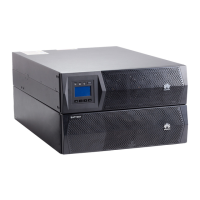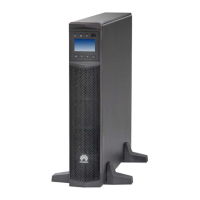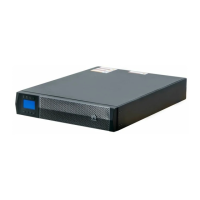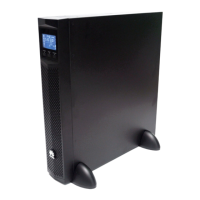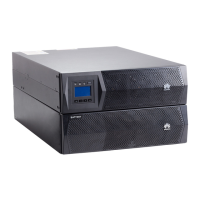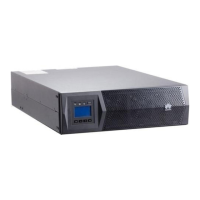UPS2000-G-(1 kVA-3 kVA)
User Manual
Copyright © Huawei Technologies Co., Ltd.
For power supply systems that are critical to significant economic interests or public order,
such as the national computing center, military command system, emergency command center,
railway signal system and control center, civil aviation and air traffic control center, airport
command center, financial clearing center, and transaction center, the Tier 4 or 3 power
architecture specified in TIA-942 must be used. That is, two power supplies must be used to
supply power to loads.
Ensure that the equipment is used in an environment that meets the product design
specifications (including power grid, temperature, and humidity). Otherwise, the equipment
may become faulty, and the resulting equipment malfunction and component damage are not
covered under the warranty.
The UPS operating environment must meet the requirements for the climate indicator,
mechanically active substance indicator, and chemically active substance indicator in ETSI
EN 300 019-1 class 3.6.
After unpacking the UPS, you are advised to power on the UPS as soon as possible. If you
temporarily do not use the UPS, take appropriate measures to prevent moisture, dust, and
foreign matter from entering the UPS.
After unpacking batteries, you are advised to connect the battery supply as soon as
possible. If you temporarily do not use the batteries, store them in a dry and clean
environment. If batteries are stored for more than 90 days, charge them in time. Otherwise,
the battery lifespan may be affected.
Install the UPS in an area far away from liquids. Do not install it under areas prone to
water leakage, such as air conditioner vents, ventilation vents, or feeder windows of the
equipment room. Ensure that no liquid enters the UPS to prevent short circuits. Ensure that
there is no condensation inside the equipment or equipment room.
If any liquid is detected inside the equipment, immediately disconnect the power supply
and contact the administrator.
Do not expose the equipment to flammable or explosive gas or smoke. Do not perform any
operation on the equipment in such environments.
During installation and maintenance, ensure that sundries do not enter the UPS. Otherwise,
equipment damage, load power derating, power failure, and personal injury may occur.
If the valid mains voltage exceeds 320 V AC, the UPS may be damaged.
A UPS can be used to serve resistive-capacitive loads, resistive loads, and micro-inductive
loads. It is recommended that a UPS not be used for pure capacitive loads, pure inductive
loads, and half-wave rectification loads. A UPS does not apply to regeneration loads.
Any operation on any electrical device in an environment that has inflammable air can cause
extreme danger. Strictly obey the operating environmental requirements specified in related
user manuals when using or storing the device.
Do not use the UPS in the following places:

